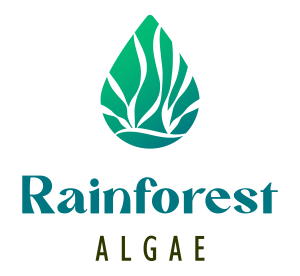MARCH 21 2023
Company Update

Stan Pankratz
Founder / President
Stan Pankratz graduated from a PhD program in late 2019 during which his analytical research project compared open pond algae cultivation systems with environmentally enclosed photobioreactor (PBR) technologies. The objective was theoretically demonstrate the potential for algae to sequester CO2 and
that the resulting algae biomass could be utilized as a feedstock for the production of hydrogen and diluent for use in oilsands activities. Upon graduation research pivoted into an applied algae cultivation research project. The challenge was to determine whether what had been predicted through modelled
systems could be achieved empirically. Where the PhD theoretical model looked at thermochemical conversion of the low value ($0.50-$1.00/L) biomass to low carbon fuels, the current research focuses on production of protein where the biomass value is above $20/kg, in a $40 billion growing global market where conventional agriculture is unable to meet demand.
Cost of algae production remains the single largest challenge for the algae industry to go mainstream. Because of this barrier, the company has conducted research to increase productivity and reduce cost. Given that Canada has a relatively cool climate, open pond systems long seen as the most cost-effective
means for producing algae, we would be at a significant economic disadvantage over similar systems found in semi-arid climates where temperatures and solar energy are much more abundant. Therefore, research has focused on developing a more advanced PBR algae cultivation platform that can cost
effectively achieve higher cell densities and yields.
Research and development activities to date have resulted in developing an algae cultivation platform that can achieve algae cell densities up to 15g/L with focus on cultivation of spirulina, an approved food source and with an extraordinary 50-60% protein composition. 100% of the algae is edible and the plant
can double its mass in 24-48 hours. The key nutrient for cultivating the algae is CO2 where for every kg of algae produced the plant uses 1.8 kg of CO2. Thus, through direct air capture and use of exhaust gas from a natural gas combined heat power (CHP) electric generator, algae offer a great GHG mitigation
story. Two patent applications related to the developed technology are currently under review.
Over the past 6 months, partnering with an Alberta energy giant and the Government IRAP and Mitacs programs, research activities have investigated the potential of cultivating algae for GHG mitigation. Highlights from this work include achieving continuous production of 2.2 g/L/d algae in process water,
improving water quality anticipating that it will be able to be reused in oilsands operations. Current electrical energy required to provide light for algae growth produce 1,088 g CO2e/kg biomass which is well below CO2 that is removed from the atmosphere through the algae growth at 1,800 g/kg biomass. The most recent achievement is the demonstration of a functional 5L capacity multiple tube flowthrough proof-of-concept PBR system where harvested media and removal of metabolites matches input water. Activities have now been initiated to scale this system to 420L capacity. Effective January 1, 2023 all research and commercialization activities related the algae cultivation technology development have been transferred from Summit View Development Corp. into Rainforest Algae Corp. to provide greater focus on this specific work.
For more information contact:
Stan Pankratz, PhD c. 403-616-0555 e. stan.pankratz@rainforestalgae.ca

